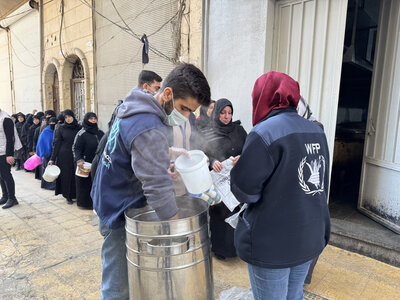Emergency
Syria
- 9.1 million
- people are food insecure
- 3.6 million
- people supported by WFP in 2024
- US$335 million
- needed for WFP emergency and recovery work in 2025
Millions of people in Syria are facing hunger due to prolonged conflict, economic collapse and an escalation in violence.
Food security has deteriorated even further since the overthrow of the Assad regime in December 2024, affecting over half of the population. Nearly 3 million people are projected to be severely food insecure.
At the same time, more than 7 million people remain internally displaced while essential infrastructure, homes and services have been destroyed.
A recent escalation of violence in Syria’s coastal areas underscores the fragility of the country’s transition.
The World Food Programme (WFP) reaches over 1.5 million people each month with targeted emergency food assistance, school meals, and nutrition and livelihood support.
However, funding shortfalls are hindering our ability to operate at scale. WFP needs US$335 million for its emergency and recovery work in Syria in 2025.
What the World Food Programme is doing to respond to the Syria emergency
-
Emergency response
-
Since the situation in Syria escalated in late 2024, WFP and partners have provided ready-to-eat rations, as well as hot and fresh meals. Prior to this, an emergency response was activated within hours of the escalation of hostilities in Lebanon, to cope with an influx of people fleeing the war.
-
Food assistance
-
Nutrition
-
School meals
-
Livelihoods



